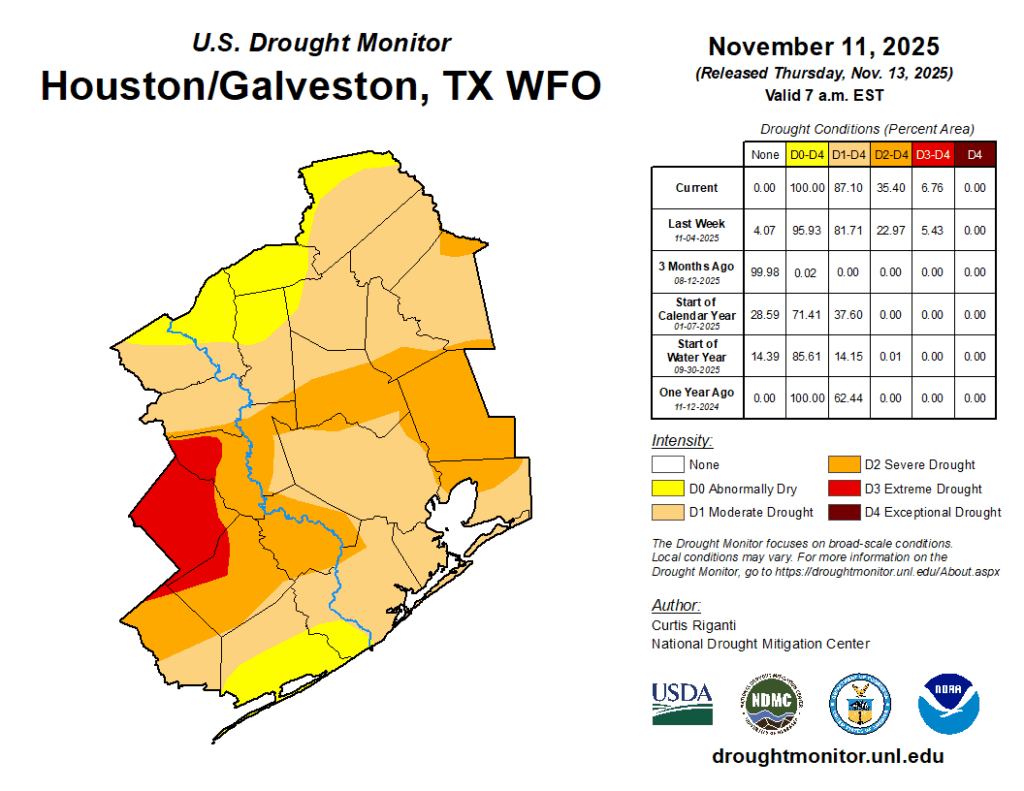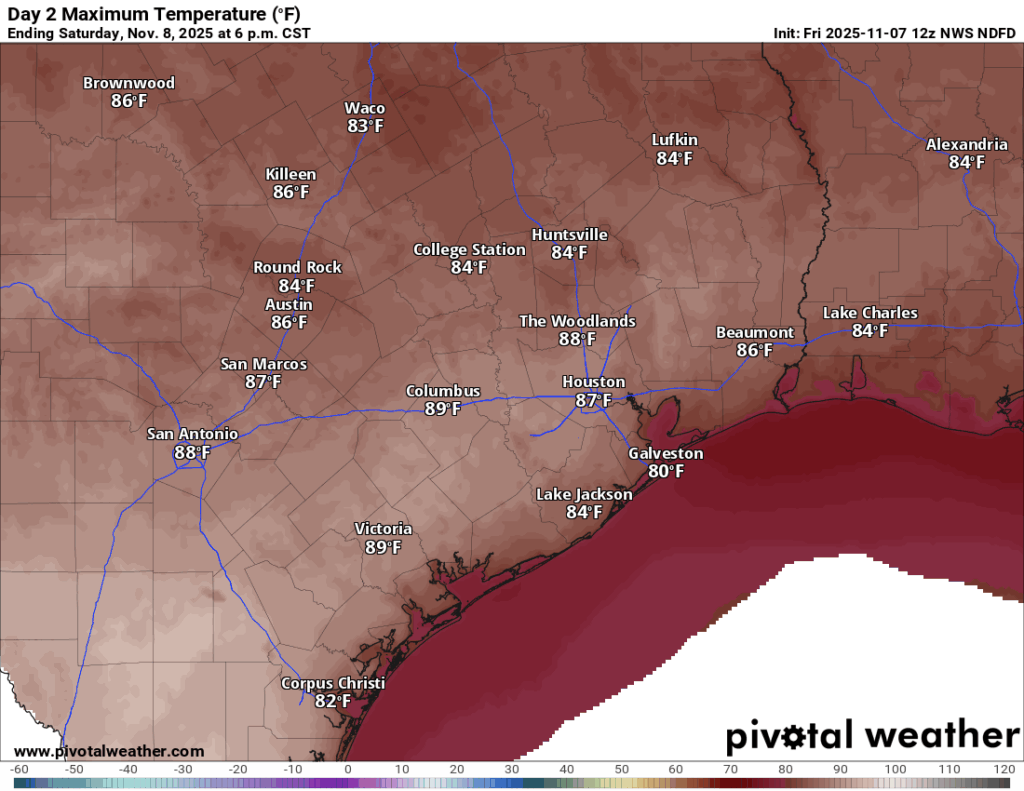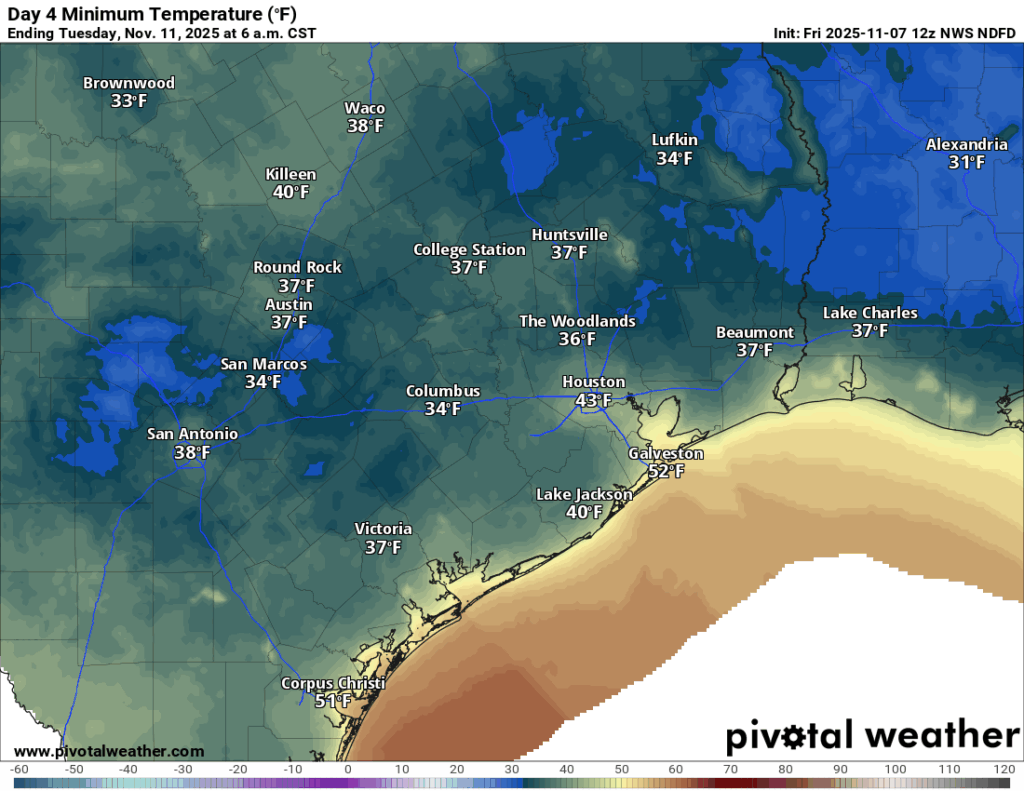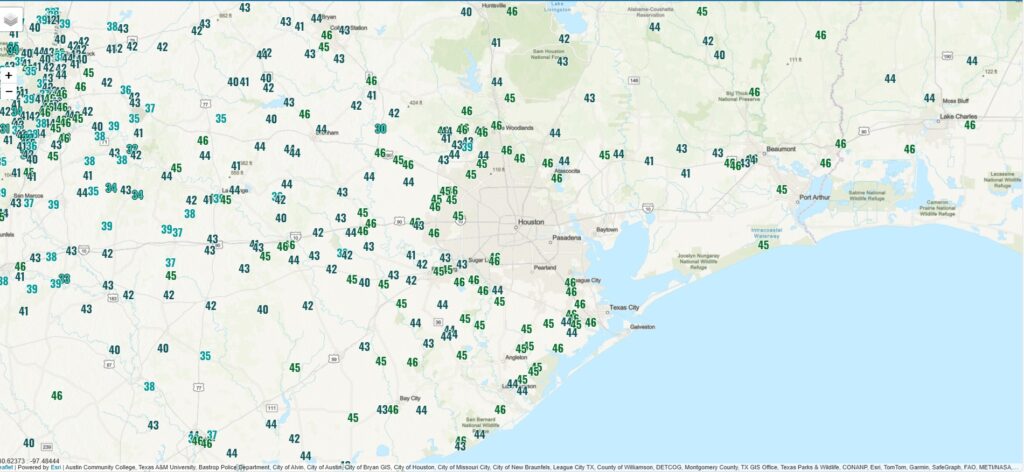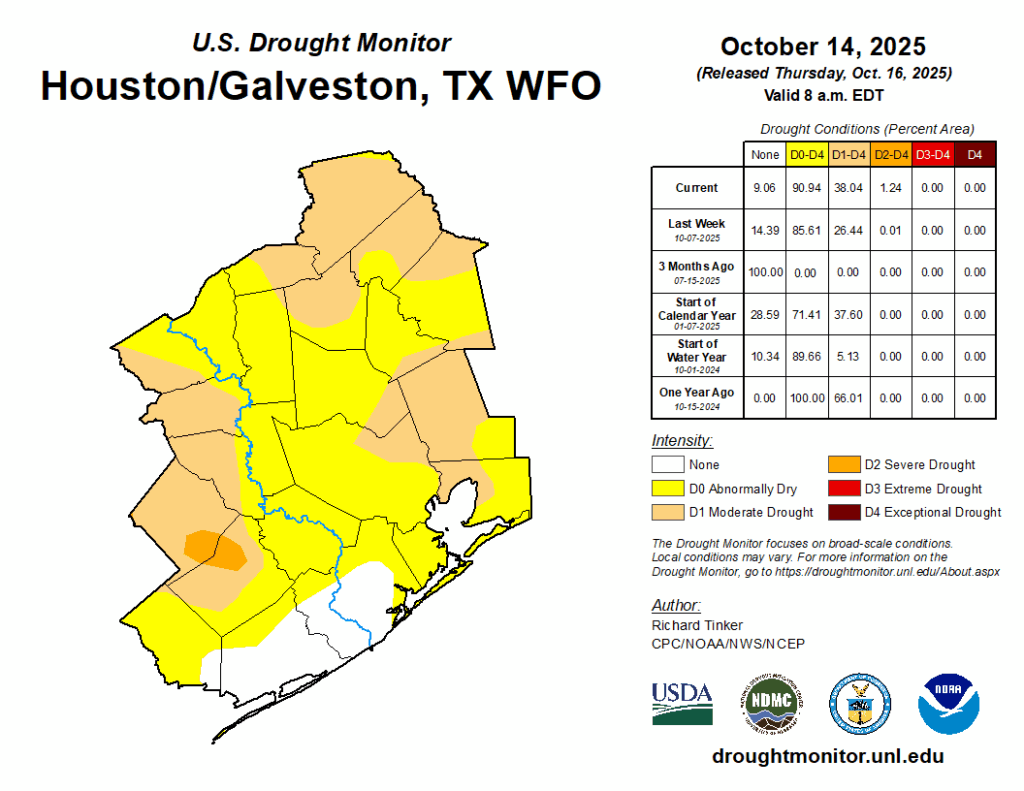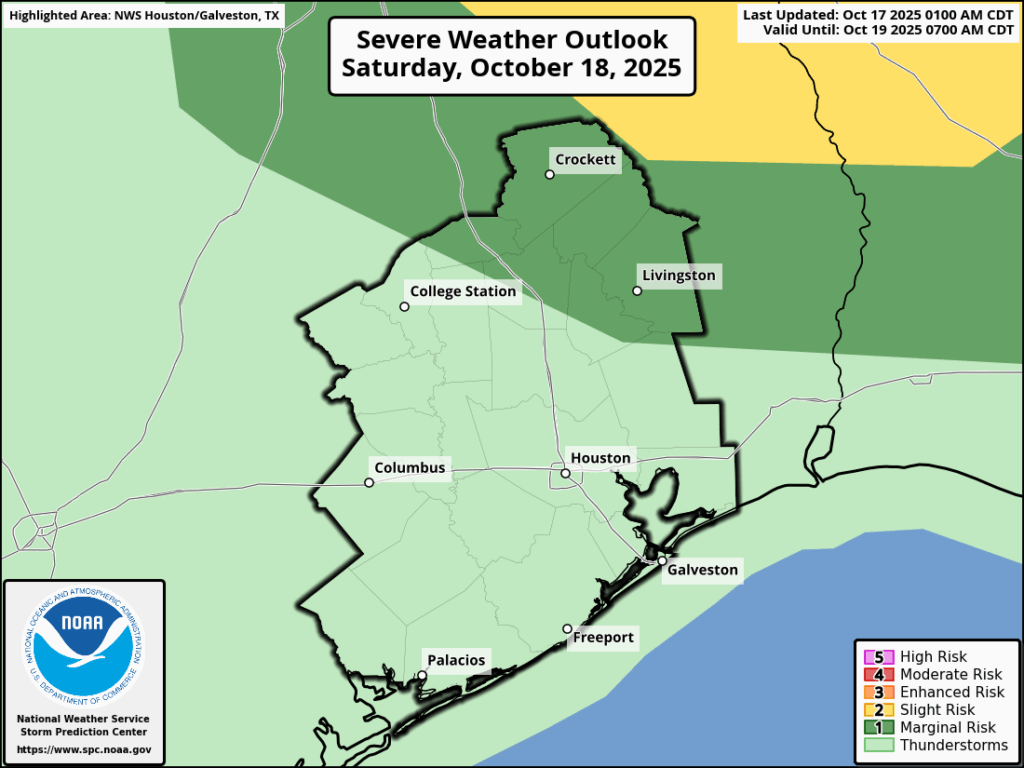In brief: Near record high temperatures will settle in over Houston, along with a burst of high humidity early next week. Our next front is penciled in for Thursday, with a good chance of much needed thunderstorms showing up in the current forecast.
Bush Airport hit 83° yesterday, 3 off the record of 86° set 20 years ago. Today’s record of 89° looks pretty safe as well. But get used to these low to mid-80s because they’re going to be with us over the next 5 or 6 days.
Today through Sunday
The next three days will be cut from the same cloth. Expect sun, some clouds (especially in the morning, along with perhaps some patchy fog), and warm, humid conditions. We’ll probably do low to mid-80s today and tomorrow and more firm mid-80s on Sunday. An isolated sprinkle or two can’t be entirely ruled out, as well as some drizzle in areas with morning fog. I’m mainly mentioning that because we don’t want to be told that we mist the forecast.
Monday and Tuesday
We really dig in on the humidity here. That may be the only thing that prevents us from hitting the upper-90s. Gulf moisture starts to pool over the area, allowing dewpoints to push closer to 70° at times, while precipitable water, or the amount of available moisture in the atmosphere goes from about 1 inch or so on Sunday to 1 to 1.5 inches Monday to 1.5 to 1.75 inches Tuesday.

More humid air heats up slower than dry air, so there’s probably a functional limit to how warm we can realistically get Monday and Tuesday. Some model guidance is very bullish, pushing us close to 88 degrees, but I think we’ll settle in the 84 to 86 degree range away from the coast most days, close enough to threaten or break records but not outlandishly hot for mid-November. An isolated shower is possible Monday with a slightly better chance for isolated showers on Tuesday. Most folks will remain dry, but some will see a passing shower.
Later next week
Models are settling on Thursday as cold front day next week. While this looks like a quick moving system, it does look like it will be fairly moisture-laden, which is good because we need rain. Severe drought coverage expanded from 23 percent to 35 percent in the Houston area week over week based on yesterday’s drought monitor report.
We continue to see extreme drought bubbling up west of Sealy and Wharton. So any rain will be welcome. Thursday’s front looks interesting on some model guidance in that it may have some element of severe weather risk. It’s too early to speculate much but the basic ingredients seem to be in place. Bottom line? Expect a cold front on Thursday that could perhaps be accompanied by some noisy thunderstorms and locally heavy rain. More to come.
Behind that front, much cooler weather arrives, though at this point it looks to fall short of what we saw earlier this week. Expect highs in the 60s and low 70s with lows in the 40s and 50s most likely. We will continue to fine tune things a bit. At least it will be closer to average for November.
Fundraiser
Our annual fundraiser continues, and we want to thank all that have purchased items or contributed to the site. Your support ensures that we can provide quality information year-round, in the good weather times, and in the inevitably bad weather times. For more information on how to donate or purchase merchandise, please visit this page. Thank you so much again for your support!

